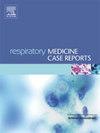由消费级三维打印机创建的具有内腔气道模型的直观支架模拟:一个案例系列。
IF 0.7
Q4 RESPIRATORY SYSTEM
引用次数: 0
摘要
气道支架术可能导致危及生命的并发症,需要先进的技术以及安全可靠的手术。术前学习有效的技术,准确识别和模拟恶性气道狭窄是至关重要的。然而,使用二维屏幕上显示的三维(3D)计算机断层扫描图像的传统方法在准确可视化和模拟气道状况方面存在局限性。为了解决这些问题,本研究提出了使用消费级3D打印机创建3D气道模型。这些具有成本效益和时间效率的模型复制气道管腔,允许精确的支架放置模拟和增强气道支架技术的学习过程。在5例恶性气道狭窄患者的病例系列中,这些模型促进了有效的支架放置,增强了对气道解剖的理解,并有助于手术成功。本研究结果表明,3D气道模型在气道支架置入术中具有广泛的临床应用潜力。然而,广泛采用该技术的证据不足,需要进一步研究。本文章由计算机程序翻译,如有差异,请以英文原文为准。
Intuitive stent simulation with internal cavity airway models created by a consumer-grade three-dimensional printer: A case series
Airway stenting, which can cause life-threatening complications, requires advanced techniques as well as safe and reliable procedures. Learning effective techniques and accurately identifying and simulating malignant airway stenosis before the procedure are crucial. However, traditional methods that use three-dimensional (3D) computed tomography images displayed on two-dimensional screens have limitations in accurately visualizing and simulating airway conditions. To address these issues, this study presents the creation of 3D airway models using a consumer-grade 3D printer. These cost-effective and time-efficient models replicate the airway lumen, allowing precise stent placement simulations and enhancing the learning process of airway stenting techniques. In a case series of five patients with malignant airway stenosis, these models facilitated effective stent placement, enhanced the understanding of airway anatomy, and contributed to procedural success. This study's findings suggest that the use of 3D airway models has substantial potential for broader clinical applications in airway stenting. However, evidence for the widespread adoption of this technology is insufficient, and further research is needed.
求助全文
通过发布文献求助,成功后即可免费获取论文全文。
去求助
来源期刊

Respiratory Medicine Case Reports
RESPIRATORY SYSTEM-
CiteScore
2.10
自引率
0.00%
发文量
213
审稿时长
87 days
 求助内容:
求助内容: 应助结果提醒方式:
应助结果提醒方式:


